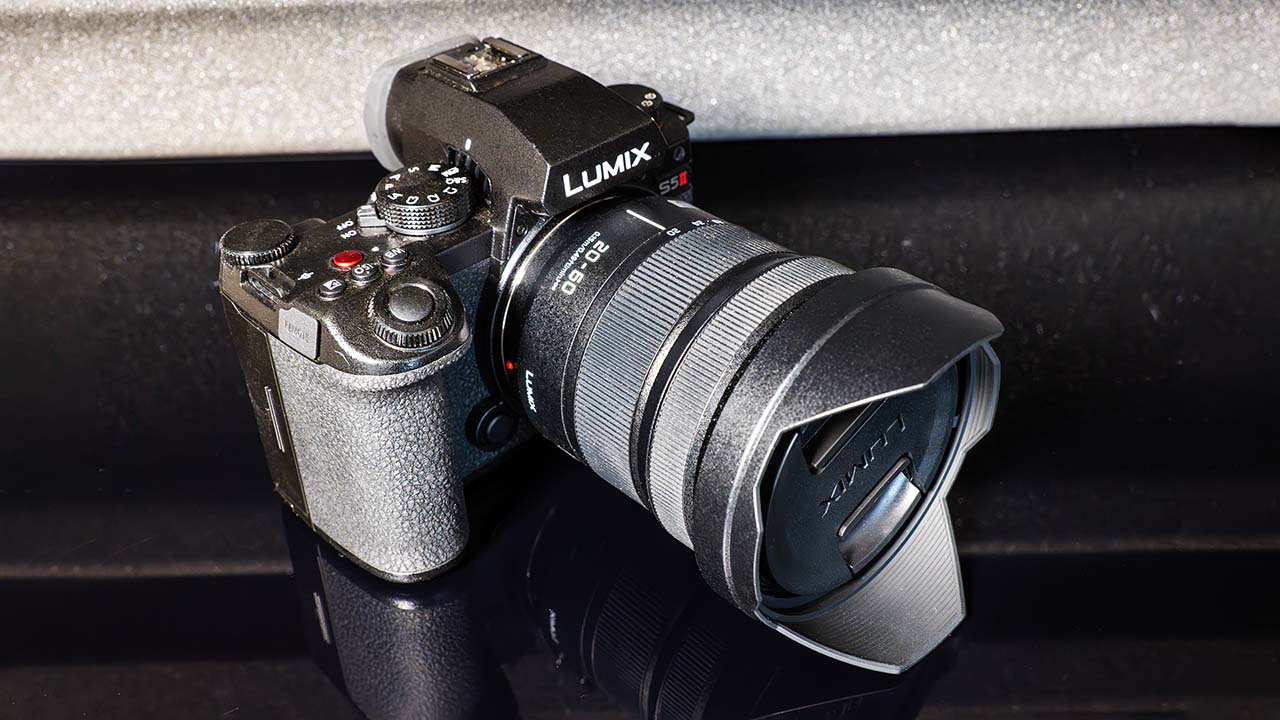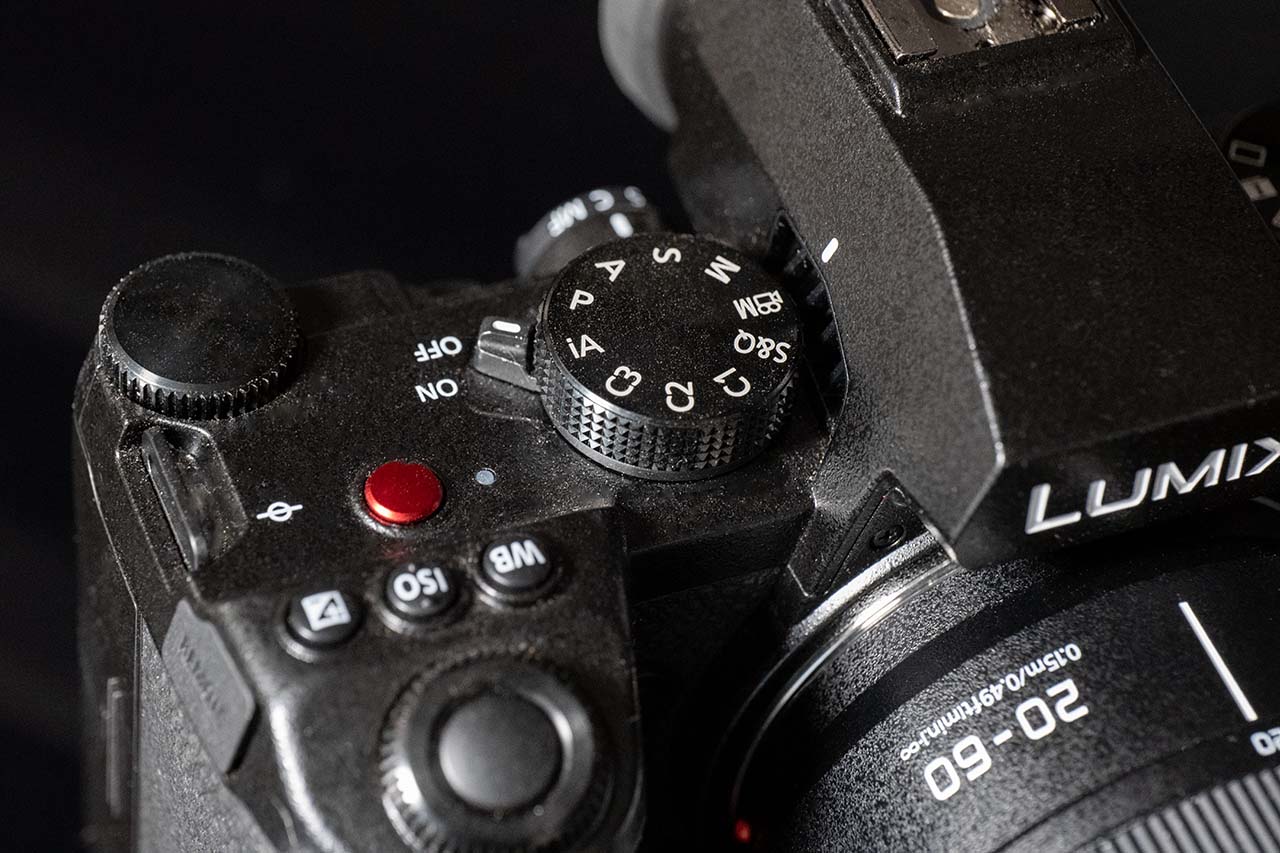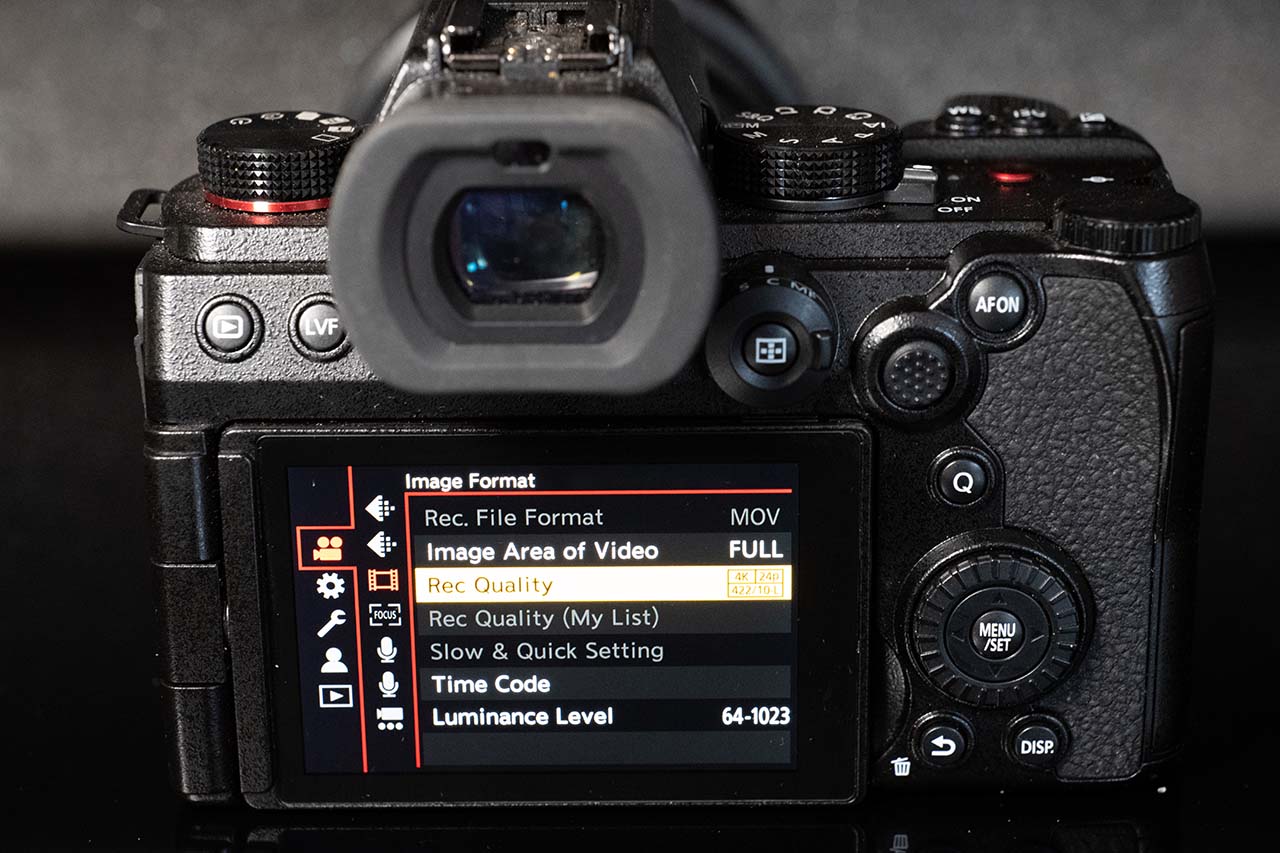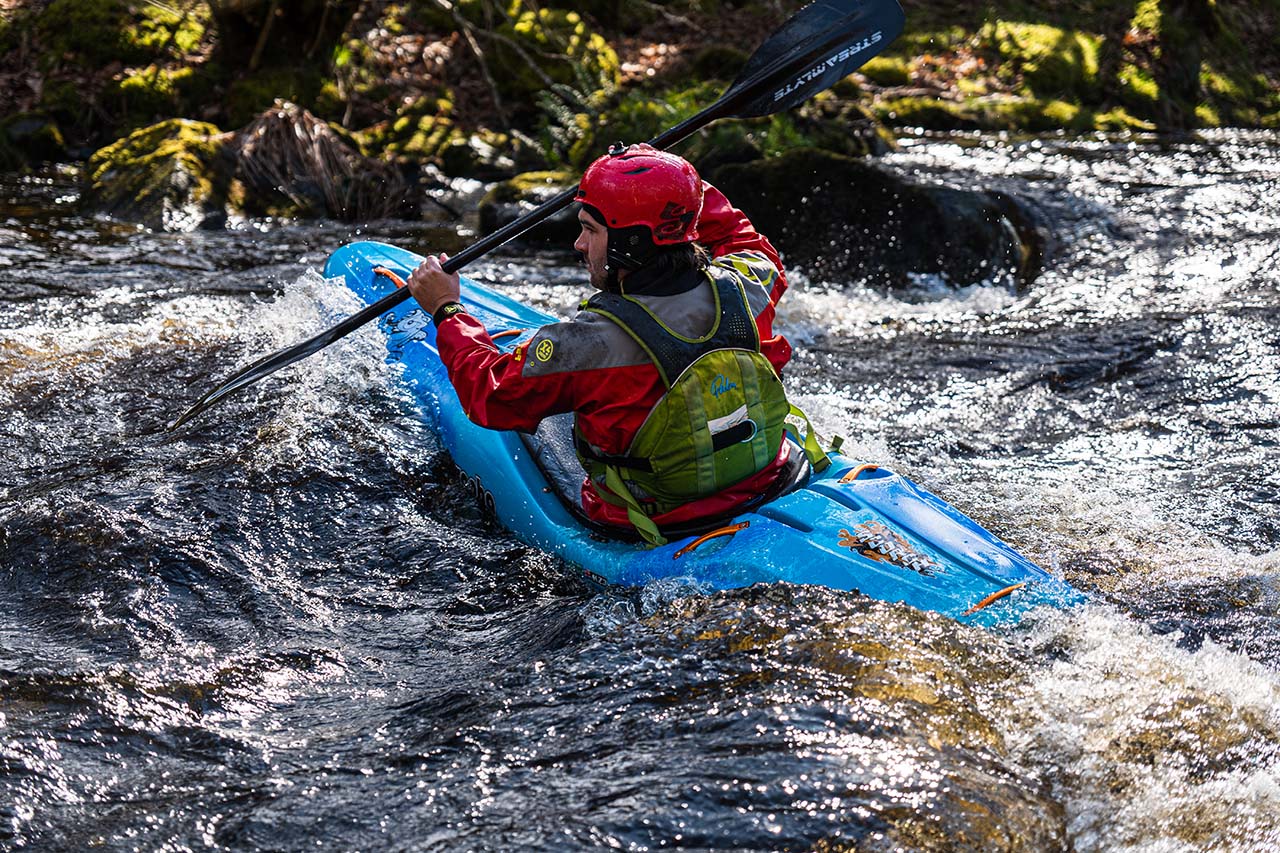
Replay: Given that the new Lumix S9 is essentially this camera's innards in a smaller body, we thought it worthwhile resurfacing Simon Wyndham's original review of the Panasonic S5II, which he reckoned was a step in the right direction for the Lumix S series cameras.
I have said it many times on these pages that the Panasonic S1 is my favourite camera that I have owned in terms of stills and overall function. I love the image quality from it, and I love the video quality from it, too. But, it has a couple of drawbacks that prevent it from being perfection.
Firstly, there's the weight. The S1 is a tank, which is a trait that is also quite positive in terms of how tough it is. The second thing is the autofocus system. The contrast detection system that the S1 uses is generally fine for most stills, but for video, particularly self shooting, it's not great. It wasn't a huge issue for me, since I usually shoot manual focus 90% of the time. But for lots of others it was a deal breaker.
With all that said, though, I have never regretted purchasing the S1 over potential rivals, but I could perhaps do with it being a bit smaller and lighter. Panasonic responded to these niggles with the S5, a much smaller and lighter camera than the S1 series, but with most of the same functionality, sensor, and image quality. However, it did disappoint some with the omission of an autofocus upgrade, and I'm pretty sure that Panasonic's initial reluctance to move to a phase detect system harmed sales.
Well, it seems that Panasonic has let go of its reluctance to adopt hybrid phase detect autofocus because it has two new cameras in its line-up, the S5II and the S5IIX. We'll be reviewing the S5IIX in a separate review, since it aims to take on a similar mantle to the video focussed S1H. For now though, let's take a look at the $2000 base S5II .

The controls and build quality will be familiar to anyone who has used the S series cameras
Initial impressions
The S5II is slightly larger than its predecessor, placing it between the S1 and the S5 in terms of bulk. As with all of the S series cameras, the S5II is built to withstand a bit of punishment, and just like its siblings it can make cameras from rivals look and feel like flimsy toys. That's not to say its rivals are of poor build quality, not by any stretch, but what I'm talking about here is a comparative impression of feel. I remember being sent a Sony A7 series camera once, and picking it up after using my S1 felt a bit like that scene from Men in Black where Agent K gives Agent J the tiny little alien gun to use.
That smaller size of the Sony cameras is one reason they are often used by adventure sports photographers. They are easier to pack and there is a vast choice of lightweight lenses to choose from. The S5II sits somewhere in-between. It feels good in the hand, the top dials give a positive feel when adjusted, and the camera gives a good impression of overall build quality.
As per the S5, the S5II retains the reversible rear LCD screen, making self-shooting much easier than the S1 cameras. The OLED viewfinder also looks great, with an increase to 3680 dots vs the 2360 of the S5. I know there are still some optical viewfinder stalwarts out there, but these days I don't think I could ever go back, given the quality of the modern LCD ones. In fact I recently tried my old DSLR and I wondered who had turned out the lights.
As far as overall control positioning and menu design goes, if you're familiar with any of the S series cameras you'll be right at home with the S5II. So much so that you'll forget you're using a brand new camera.

The menu system is familiar, too, as well as easy to use for anyone new to the system
What's new on the S5II vs the S5?
Okay, so it's got great build quality, and it's easy to jump into using if you're familiar with the previous cameras, but what's actually new on it?
First and foremost, the S5II has a totally new sensor. A new sensor was inevitable, given the upgrade to a hybrid phase-detection autofocus system, because such functionality needs to take place on the chip itself.
The new camera features a dual native ISO system, much like its predecessors, except unlike the S5 it is now possible to manually select between the base ISOs as well as letting the system decide automatically. These base ISOs are the same as the S5 at 640 and 4000 respectively. Similarly, the ISO range can be set to go from ISO50 all the way up to ISO204,800 in expanded mode.
Burst shooting has been improved, giving up to 9fps with the mechanical shutter versus the 7fps of the S5 and the S1 series. 30fps is possible using the electronic shutter, and unlike the S5, this can take raw photos rather than effectively just create an mp4 video file. Be warned though, fast moving subjects and camera movement in this mode can suffer from rolling shutter effects, which kind of defies the point of having fast burst speeds in the first place. However, it is a step in the right direction, though it has some way to go before matching the almighty Nikon Z9 with its 100% electronic shutter system. That might seem an unfair comparison given the price difference ($2000 vs $5500). But, it's worth noting that Nikon will be bringing the Z9's technology into lower tier cameras in future releases.
For video users, the S5II has a new fan cooling system that allows for pretty much unlimited recording times, even at resolutions as high as 6K. The new Active IS system also gives video much better stabilisation than the previous camera, with Panasonic claiming a 2x improvement in shake compensation over the S5. Video bitrates are limited to 200Mbps for the highest 6K (3:2) resolutions. If you want all-intra recording or direct recording via USB in ProRes to an external SSD, then the forthcoming S5IIX will be more your cup of tea.
For connectivity, the S5II gives users a full size HDMI port, giving a much more robust connection to external monitors. The USB-C port has also been upgrade to Gen 2 for faster file transfers.



The new autofocus system handles fast action well, even with strong backlight and water reflections going on
Conclusions
In use the S5II felt very familiar to me. A bit like putting on a well worn comfy jumper, and offered no surprises. What Panasonic has done here is to take an already very good camera, and make it much more competitive. There are numerous tweaks here and there over the S5, but the big one is the new autofocus system. I found that it locked on focus and kept up with subjects even with strong backlit conditions and action going on. It even drastically improved the focus speed when using the Sigma MC-21 EF to L mount adaptor, although with this adaptor it still isn't fast enough for sports.
Stills battery life is slightly reduced from the S5, but you can still inject extra juice via the USB port if required, or just carry extra batteries. The main question here, though, is whether it is worth upgrading from the S1 series or the S5? The image quality is very similar across them all, so it will depend a lot on whether your main use is video or stills, and what you normally shoot.
For self shooting, the S5II is possibly a sound upgrade for the new autofocus alone, although it is doubtful how many vloggers use the S5 as their main camera anyway, due to it's contrast detect system. If you have an S5 and use it for general video, mostly using manual focus, then the S5II doesn't bring much different to the table, apart from the better recording times due to the fan cooling system.
It's stills enthusiasts who take images of difficult to capture subjects such as sports or wildlife who will benefit most from the S5II. Once again, if such photographers already own a camera for these purposes it's doubtful they bought an S5 as a first choice in the first place. So the S5II is now a camera that photographers can consider on their list of possible products to buy for such purposes. The new phase detect autofocus is fast enough and accurate enough to be considered a worthy competitor. The image quality from the Lumix cameras has always been some of the best out there, and in combination with the better focus system and the comparatively lower price (currently £1,999 - £2,018 for the body) vs some competitors, the S5II is one to seriously consider.
Tags: Production Review Cameras


Comments